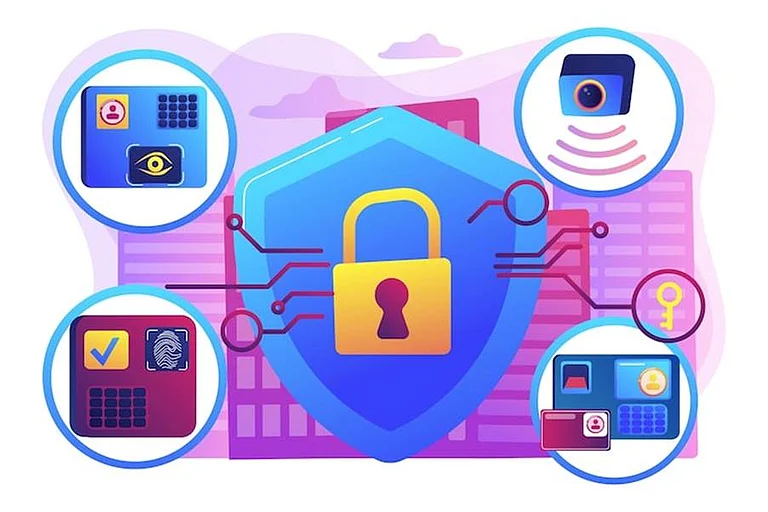Crypto exchanges have a major role to play in the fast-evolving landscape of digital assets: protecting users, maintaining market integrity, and operating transparently. The urgency of strong internal controls became globally evident after the collapse of FTX in 2022, where poor governance, lack of oversight, and misuse of customer funds triggered one of the largest failures in crypto history. The incident highlighted a critical truth — even in the absence of fully developed regulations, exchanges must build rigorous, self-driven risk-management frameworks to safeguard users and maintain trust.
In many jurisdictions, formal laws and regulatory frameworks are still in progress, leaving exchanges responsible for creating proactive safeguards. Strengthening internal oversight is no longer just a compliance gesture; it is essential for long-term credibility and operational resilience. This article discusses how exchanges can adopt robust risk-management measures even without formal regulation, how these frameworks work in practice, and the industry best practices shaping responsible exchange governance.
Why risk management matters for crypto exchanges
Crypto markets operate 24/7, are global, and face unique threats, including extreme volatility, hacking attempts, insider risks, and liquidity crunches. Without strong guardrails, exchanges can experience operational failure or expose users to significant losses.
Key reasons risk management is essential:
Trust building in a largely unregulated market
Protection against cyberattacks and system breaches
Ensuring transparency and preventing misuse of users' funds
Reducing operational risk and downtime
Maintaining liquidity and smooth trading
Attracting institutional investors who demand strict controls
Core strategies for Exchanges to strengthen risk management without Formal Laws
The following are some actionable, widely adopted frameworks that exchanges can implement on a voluntary basis. These steps are inspired by established practices in the financial industry, adapted to crypto environments.
1. Implement Transparent Internal Governance
Even without formal crypto regulation, exchanges can develop an internal governance model that resembles those applied to traditional financial institutions.
Best practices:
Clearly defined organizational structure with separated duties: risk, compliance, tech, finance.
Establish an internal risk committee to oversee systemic risks.
Adopt "four-eyes" approval processes for fund movements and system changes.
Conduct quarterly independent audits for security and financial reserves.
2. Improve Cybersecurity Frameworks
More than 50% of crypto exchanges have historically failed due to cyberattacks. Preemptive security architecture is a must.
Key cybersecurity measures:
Multi-layered firewalls and intrusion monitoring
Cold vs. hot wallet fund segregation
Biometric and multi-factor authentication
Zero Trust architecture
Regular penetration testing
24/7 security operations center (SOC) monitoring
3. Implement strict asset custody and protection of users' funds
Without such laws in effect regarding segregation, it is necessary for exchanges to voluntarily ensure user assets remain intact.
Core standards include:
Safeguarding user assets in separate custody accounts
Publishing proof-of-reserves reports
Periodic solvency audits
Automated alerts on unusual fund movements
Such actions further prevent misuse and show transparency in their activities.
4. Liquidity Risk Management and Stress Testing
For market volatility, stability in liquidity must be ensured even in some extreme scenarios.
Effective liquidity measures:
Maintain sufficient order-book depth
Stress testing: perform flash crash simulations, spikes in volume
Partner with liquidity providers
Monitor stablecoin reserves and collateralization
5. Market Surveillance and Anti-Manipulation Controls
Exchanges can implement strong monitoring tools to ensure there is fair trading, even before the crypto policy framework is enacted.
Surveillance tools detect:
Wash trading
Insider trading
Spoofing, layering, pump-and-dump activity
Sudden market anomalies
API abuse or bot manipulation
6. Establish internal crypto policy standards
A proactive approach would involve drafting an internal Crypto Policy and setting down the exchange's own standards. This acts like a "self-regulation charter" and proves responsibility.
Such a policy could include:
Trading Rules & User Conduct
Risk exposure limits per asset
Stablecoin approval checklist
Security protocols
Reserves management
User verification and onboarding procedures
Exchanges with internal policy standards gain more user confidence.
7. Strong KYC/AML Controls (Even Without Legal Mandates)
The exchanges should voluntarily adopt global best practices in mitigating financial crime risks:
Trade volume-based verification levels
Ongoing transaction monitoring
Risk scoring for suspicious accounts
Sanctions screening
Enhanced due diligence in high-risk profiles
These practices align the exchange with global compliance norms.
8. Transparent Communication and User Education
Risk management also involves educating traders about:
Safe trading habits
Phishing risks
Volatility implications
Wallet safety
Platform security features
Clear communication minimizes misunderstandings and builds confidence.
9. Building a Culture of Ethical Responsibility
Technology is not enough. A strong culture is what's essential.
Elements of an ethical culture:
Zero tolerance for conflict of interest
Fair listing procedures
Commitment to Transparency
Whistleblower protection
Independent board advisors
Comparison Table: Internal vs. External Risk Controls
Aspect | Internal Self-Regulation (Without Laws) | Regulated Frameworks (With Formal Laws) |
Flexibility | High; exchanges can innovate quickly | Lower; legal constraints require approval |
Cost | Moderate; depends on internal capacity | Higher; compliance costs audits filings |
User Trust | Improves with transparency and audits | Naturally high due to legal backing |
Enforcement | Internal committees & policies | Law enforcement & government oversight |
Adaptability | Immediate updates during crises | Slower; dependent on regulators |
Most Effective Risk Management Steps
Independent security and financial audits
Proof-of-reserves transparency
Strong cybersecurity protocols
Market surveillance tools
Stress testing and liquidity checks
Internal Crypto Policy framework
Clear governance and segregation of roles
Robust KYC/AML screening
Transparent user education
Conclusion
Even in countries where formal crypto laws are still evolving, exchanges can establish rigorous risk-management systems that protect users, maintain transparency, and build long-term trust. By voluntarily adopting global best practices—ranging from cybersecurity frameworks to internal Crypto Policy standards—exchanges can operate responsibly and sustainably.
Strong internal governance, operational discipline, and transparency create a resilient foundation that prepares exchanges not only for current challenges but also for future regulations. In a dynamic and fast-growing industry, proactive risk management is not just optional—it is essential for long-term success.
FAQs (People Also Ask–Style Insights)
1. How do crypto exchanges avoid risks without official regulation?
Exchanges use internal risk frameworks, audits, cybersecurity, market surveillance tools, liquidity monitoring, and user fund segregation to safeguard operations even without government laws.
2. What is the most important risk management tool for exchanges?
Cybersecurity remains the most critical tool due to the high frequency of hacks. Combined with proof-of-reserves and liquidity controls, it forms a strong protection layer.
3. Do exchanges need legal regulation to operate safely?
No. While regulation improves accountability, exchanges can still operate safely through voluntary compliance with global standards such as ISO security frameworks and internal Crypto Policy guidelines.
4. How can exchanges prevent hacking?
By implementing cold wallet storage, multi-factor authentication, penetration testing, encryption technologies, and real-time threat monitoring.
5. Why is proof-of-reserves important for user trust?
It verifies that the exchange holds sufficient assets to cover customer balances and ensures user funds are not being misused.
6. How do exchanges detect market manipulation?
With surveillance tools that analyze order-book behavior, identify suspicious patterns like wash trading or spoofing, and generate automatic alerts.
7. What role does user education play in risk management?
Educated users are less vulnerable to phishing, scams, and improper trading behavior, reducing overall platform risk.

























